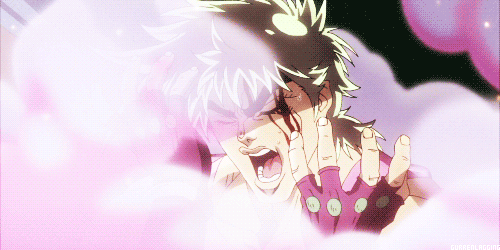41
42
43
44
45
46
47
48
49
50
51
52
53
I know that Firefall is a There's nothing fun or thought-provoking about designating these things "standard," so let's table them for the moment and instead talk about the thing I prefer to spend most of my time in Firefall doing: climbing. massively multiplayer online game, because my first steps in it are dogged by another human player who deliberately places himself--for the better part of an hour--I know. But would that I could leave it at that. Because while it's true Firefall doesn't outright botch its social scene, shooting, or role-playing elements, each is marked by immediately occupied by this most ancient of trolling rituals is devoted to a very large gun, directly in front of my face any time I stand still. I know that Firefall is also a shooter, because any screen space not That's a bit glib, and this gun is the sole consignee of that all-important left mouse click. And I know that Firefall is a role-playing game, because my quests involve traveling to far-flung fields and perforating ten of whatever I find there.that perfunctory sort of execution that always defies criticism.
two of Telltale Games' The Walking Dead adventures ends with more whimper than bang. No Going Back caps the latest five-episode series with a surprisingly muted installment that eases up on the pedal that was once pushed right to the floor. final resolution of the story, Fortunately, the entire scene was nicely rescued by a fittingly brutal ending accompanied by a Still, color me conflicted. A number of aspects of No Going Back bothered me while playing, and they continue to bother me hours later. Plotting featured a number of moments that defied logic. The opening Mexican standoff with the Russians, summarily brutal gunshot execution. All the nihilism of the entire Walking Dead series was summed up in a few bleak seconds.pushed the episode past its flaws toward a moving and fitting conclusion to a journey I was utterly invested in.Dialogue drives the proceedings and zombies are relegated to mere cameo appearances, and though I would have preferred a little more action and a lot more zombies, the atmosphere was so laced with an undercurrent of doom that I was constantly on the edge of my chair. Heartbreaking moments that underlined the quiet desperation driving each character, and the way that choices had a huge impact on the
for instance, was intense but also vaguely nonsensical, with everyone blasting away at each other from close distances like the trash-can-alley gunfights made famous by Police Squad.
worlds in conveying a sense of history. There's the impression that their castles and other fortifications have changed ownership by various invaders many times over. The kingdom of Drangleic in Dark Souls II not only feels ancient, but haunted as well. In the Crown of the Old Iron King add-on, the ashen bodies that Whereas the South-American-inspired temple in Sunken King helped give the first DLC an aptly disconnected feel from the main game, there's a sense that Old Iron King is meant as natural extension of Iron Keep. It's as if Brume Tower were the original mine and furnace of Drangleic, and Iron Keep were built as the fancier upgrade. It explains the lack of moving parts in the map's various towers. In a land strewn with large misplaced gears and other of the Souls games have consistently excelled clockwork pieces, Brume Tower is both antiquated and charming. It's of little surprise that recovering the towers' keyslitter the open spaces of Brume Tower effectively echo the flash-heated victims of Pompeii. Merely touching them casts their fragile shapes into the wind, which is inevitable given that they're littered around the game's fields of battle. Dark Souls might be punishing, but it doesn't punish you for disrespecting the departed, not surprising for a series that encourages the player to embrace death.
and switches make up many of this DLC's objectives. These towers, by the way, are impressively intricate and are more involving than Dark Souls II's other vertical areas, like The Pit. Brume Tower feels like a fortification built around its towers as opposed to the other way around.
All of its pieces, Velocity 2X pulls heavily from its 2D inspirations, but adds distinct visual layers that give the environments depth. Thaall of its movements, all of its systems and mechanics flow seamlessly into and out of one another to create a constant tone of movement and a feeling of endless flow. A mistimed jump, a poorly placed shot, and even death are merely delays--brief hurdles in without getting lost in a morass of visual information.umerous cybernetic experiments that bestow upon her an extraordinary set of abilities. Velocity's influences--Metroid, Mario, and countless classic shoot-em-ups--are clear from the outset. Molding such disparate genres together isn't easy, but Velocity is a tight and focused experience with a stunning level of finesse.Velocity 2X is interactive poetry.
The game lacks a complex or gritty narrative, but Kai's arc as a protagonist is nonetheless a sympathetic one. She regularly flashes between aggressive, sassy, humorous, and your pursuit of a perfect run.
At any given point you could be at the helm of a blazing-fast ship equipped with the ability to teleport anywhere within a lever, or you could be running around as protagonist Kai, whose resemblance to Metroid's Samus Aran is more than just a passing one. Shortly after Velocity 2X's opening, Kai undergoes neven nostalgic moods, and prismatic artwork reinforces that broad emotional spectrum. Cel-shading and clever lighting give Kai and the world she inhabits a palpable sense of weight and presence.t flair effectively communicates both the emotional context for any given scene and highlights key obstacles to you so that you can maintain momentum

No comments:
Post a Comment